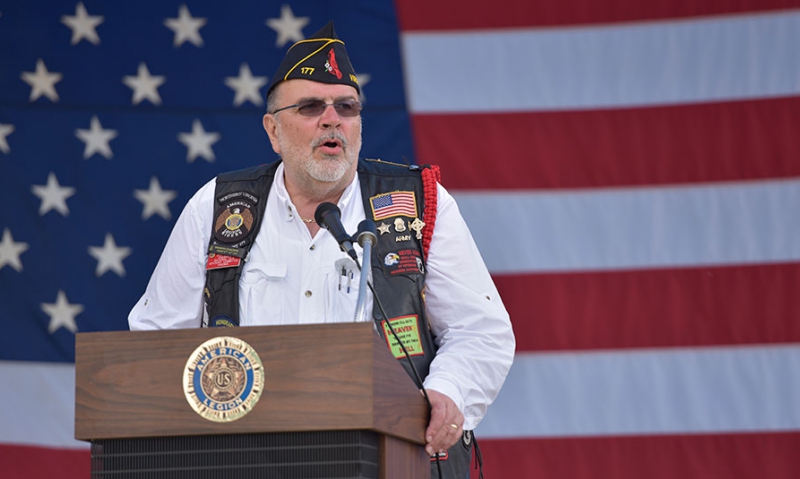
A 'veteran-centric' Legacy Run
Department of Virginia Legionnaire Bob Sussan took over as chief road captain for The American Legion Legacy Run in 2014. In setting up the 2015 route, he wanted to add a new feature to the Run: making daily stops at military memorials along the route for wreath-laying ceremonies.
It was a decision, Sussan said, that the Run participants overwhelmingly supported and then enjoyed last summer. Though the official route for 2016 hasn’t been released yet, Sussan said this year’s participants can expect similar stops. Highlights will include multiple wreath-layings, including stops at the National Cemetery in Hopkinsville, Ky.; the Wilson County Veterans Memorial & Museum in Lebanon, Tenn.; and the Veterans Memorial at Bay Tree Park in Red Bay, Ala.
“We’ve made it very veteran-centric,” said Sussan, who serves as chairman of The American Legion Riders Advisory Committee. “Last year was, I think, the turning point to that. We do a wreath-laying every day. We visit exclusively (Legion) posts for lunch and dinner along the way. It’s really changed.
“What we’re trying to do … is get as many veteran events involved. We actually formed an honor guard on the Legacy Run. We have one rider that started re-practicing blowing the bugle, and he blows the bugle for us.”
Sussan said he’s learned a lot since taking over as the Run’s road captain. “It’s a challenge to keep everybody together,” he said. “As much as I disbelieved when I was in the back as a regular road captain that the chief road captain was only going as slow as he was, it’s true. He really is going that slow. The key is to building up to that speed really, really slow. What I learned was, and it worked … is increasing speed by a mile an hour. That helped a lot.”
What also helps is the planning that goes into the Run. Sussan said there are three to four “cage runs” that take place during the months leading up to the ride to determine the best route, points of interest and, perhaps most importantly, gas stops at locations that can handle 300-plus motorcycles.
“We have to try to find, every 100 miles or so, a gas station that’s appropriate for us,” he said. “Those (motorcycles) we’re riding with are a very long snake. We need to get that snake off the road. We need to stage it somewhere. We need to gas them. And then we need to stage them somewhere again to get them back on the road.
“We not only coordinate that, (but) we try to coordinate with local media. Many, many places we need to coordinate with local law enforcement. And then we need to find somewhere to feed 350-450 mouths every lunchtime and dinner. Plus, we need to be able to house them every night.”
But even the best-laid plans can go awry. “Last year we had it all planned out, and … some of the roads washed out in Ohio because of the rain. I had to reroute. But we’re flexible, and I think we do a pretty good job.
Online registration for this year’s Legacy Run ends Aug. 1. To register, click here.
For more information on this year’s Legacy Run, click here.
